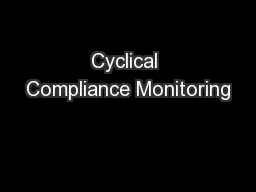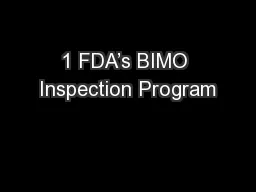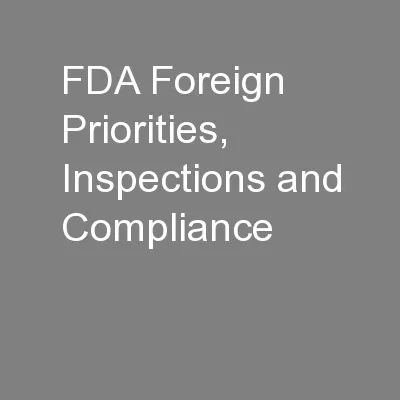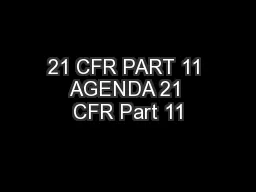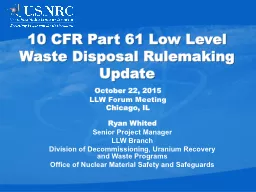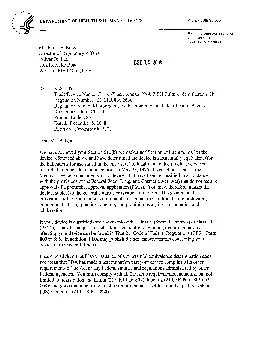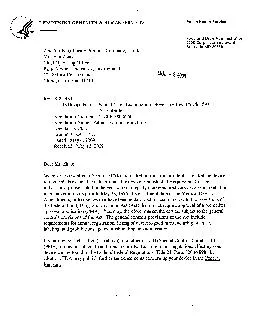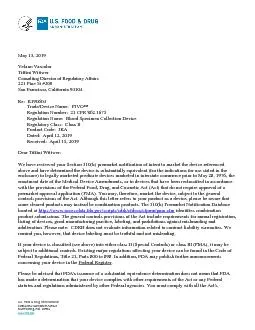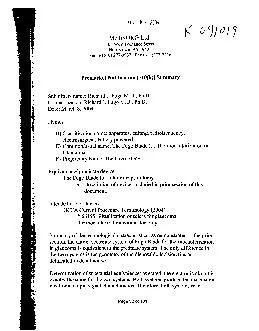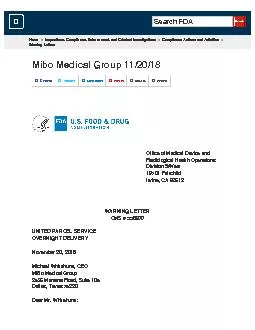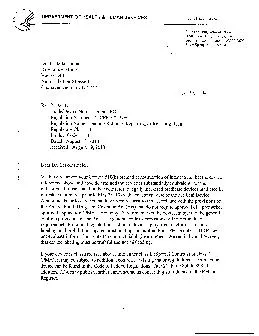PPT-FDA 21 CFR Part 11 Compliance
Author : debby-jeon | Published Date : 2018-09-21
Charles Yan PhD Senior Director Clinical Data Management Jiangsu Hengrui Pharmaceutical Co LTD Topics What is Part 11 Background Scope and Component R equirements
Presentation Embed Code
Download Presentation
Download Presentation The PPT/PDF document "FDA 21 CFR Part 11 Compliance" is the property of its rightful owner. Permission is granted to download and print the materials on this website for personal, non-commercial use only, and to display it on your personal computer provided you do not modify the materials and that you retain all copyright notices contained in the materials. By downloading content from our website, you accept the terms of this agreement.
FDA 21 CFR Part 11 Compliance: Transcript
Charles Yan PhD Senior Director Clinical Data Management Jiangsu Hengrui Pharmaceutical Co LTD Topics What is Part 11 Background Scope and Component R equirements FDA 21CFR11 Inspection . 2. How do they effect . you everyday?. . NAADAC 2014 -. All photos © Gr8fulTed Productions. Objectives. We want you to come out of this session with enough of a general understanding to keep you (mostly) out of trouble regarding confidentiality rules and regulation.. Introduction. PRIMARY FOCUS OF MONITORING ACTIVITIES. Improving educational results and functional outcomes;. Meeting critical program requirements related to improving results; and. Continuous examination of performance for compliance and results.. and. IRB Inspections. VA IRB Chairs Meeting. August 2012. Janet Donnelly RAC, CIP. Office of Good Clinical Practice . Office of the Commissioner. Food and Drug Administration . 2. 2. Disclaimer. The views expressed in this presentation are those of the speaker and is consistent with 21 CFR 10.85 (k) and constitutes an informal communication that represents the presenter's best judgment at this time but does not constitute an advisory opinion, does not necessarily represent the formal position of FDA, and does not bind or otherwise obligate or commit the agency to the views expressed. . Bruce Ross. , . M.A. M.P.H.. Director, India Office. Agenda. Priorities. Challenges of globalization. cGMP. . deficiencies. Comparison. Post inspection regulatory . actions. 2. Advance Regulatory Science: the science of developing new tools, standards and approaches to assess the safety and effectiveness, quality and performance of FDA-regulated products. . Sections in 21 CFR Part 11. Terminology. About Part 11. Importance of Part 11. Scope of Part 11. Applications. Advantages. Validation. Predicate rule requirements. Security Procedures. Qualification &Accountability. Rulemaking Update . . Ryan Whited . Senior Project Manager. LLW Branch. Division . of Decommissioning, Uranium Recovery and Waste Programs. Office of Nuclear Material Safety and Safeguards. October 22, 2015. SUPPLEMENTAL MATERIAL. Version: 12-7-17. Business Size. Compliance Dates. For Most Produce. Proposed . Water Related Compliance. Dates. All. other. businesses (>$500K). 1/26/18. 1/26/22. Small businesses . Sponsors of Day Care Homes and Unaffiliated Centers 2 CFR 200: Super circular OMB Circulars have been superseded; utilize the Super-Circular when discrepancies appear between the Super-Circular and the 7 CFR 226 and FNS 796-2 Rev. 4 Page 2-This letter will allow you to begin marketing your device as described in your Section 510(k)premarket notification. The FDA finding of substantial equivalence of your device to a legallymarket Page 2 -Mr. ZhaoPlease be advised that FDA's issuance of a substantial equivalence determination does notmean that FDA has made a determination that your device complies with other requirementsof the U.S. Food & Drug 10903 New Hampshire Avenue 3 Silver Spring, MD 20993 www.fda.gov May 13, 2019 Tiffini Wittwer Consulting Director of Regulatory Affairs 221 Pine St #200 San Francisco, California 9 identically when placed in contact with tissue since they are the sameelectronic system.PPage 33 of 101 DEPARTMENT OF HEALTH & HUMAN SERVICES Public Health ServiceFood and Drug Administration9200 Corp Mibo Medical Group 11/20/18 Office of Medical Device andRadiological Health Operations WARNING LETTERCMS # 558900 Page 2- Dr. GerkensmneierPlease be advised that FDA's issuance of a substantial equivalence determination does notmean that FDA has made a determination that your device complies with other requiremen
Download Document
Here is the link to download the presentation.
"FDA 21 CFR Part 11 Compliance"The content belongs to its owner. You may download and print it for personal use, without modification, and keep all copyright notices. By downloading, you agree to these terms.
Related Documents


